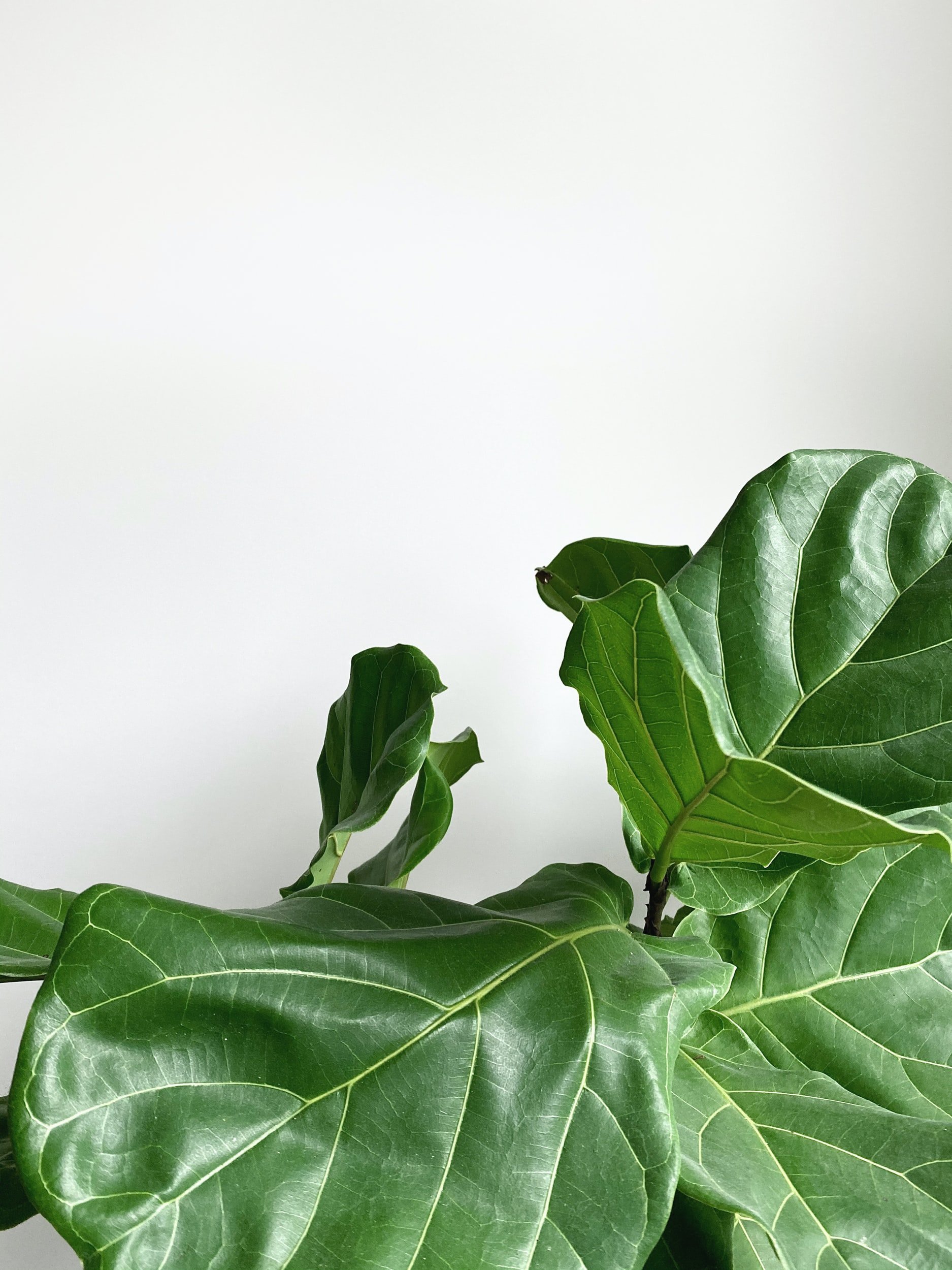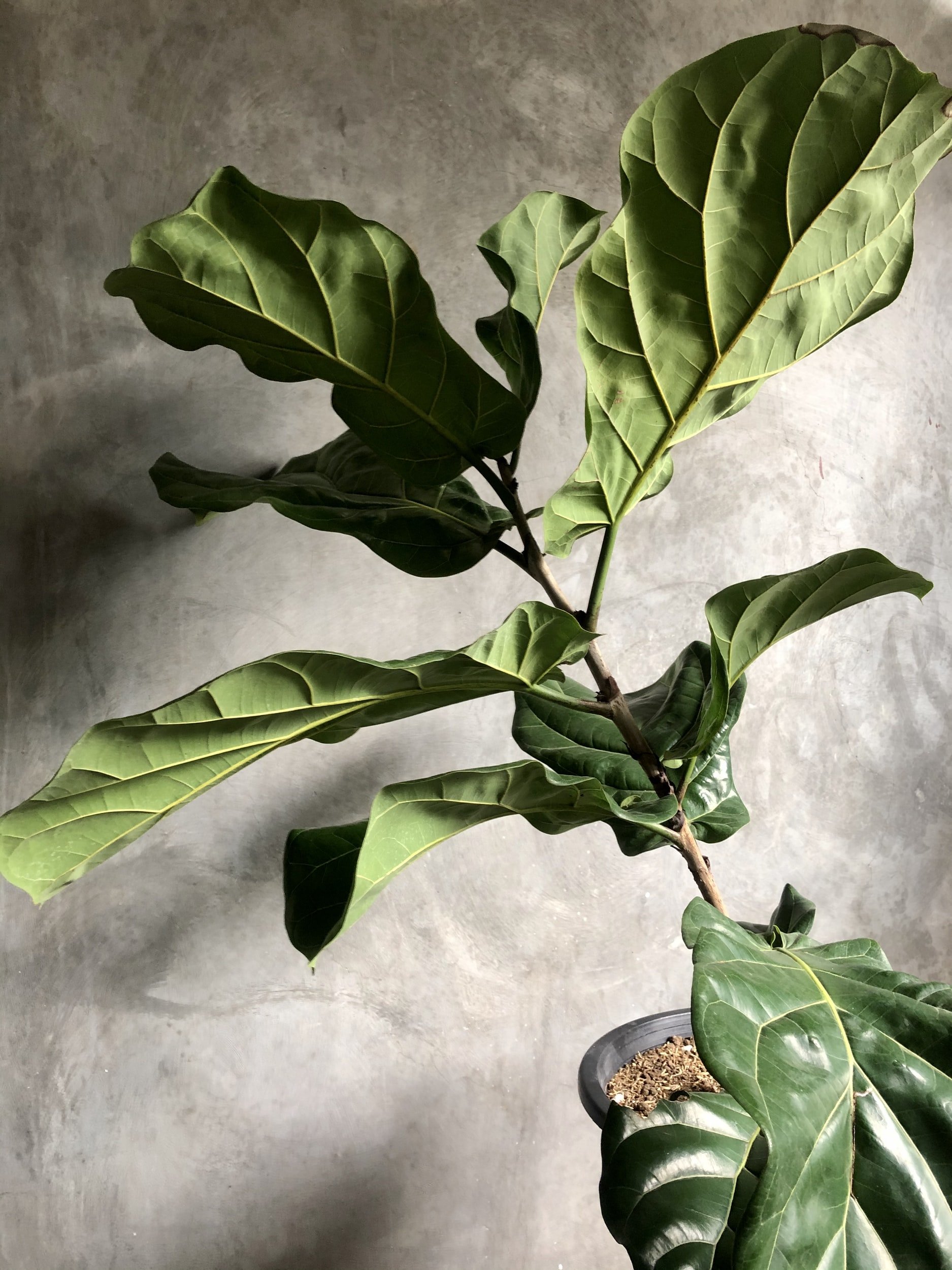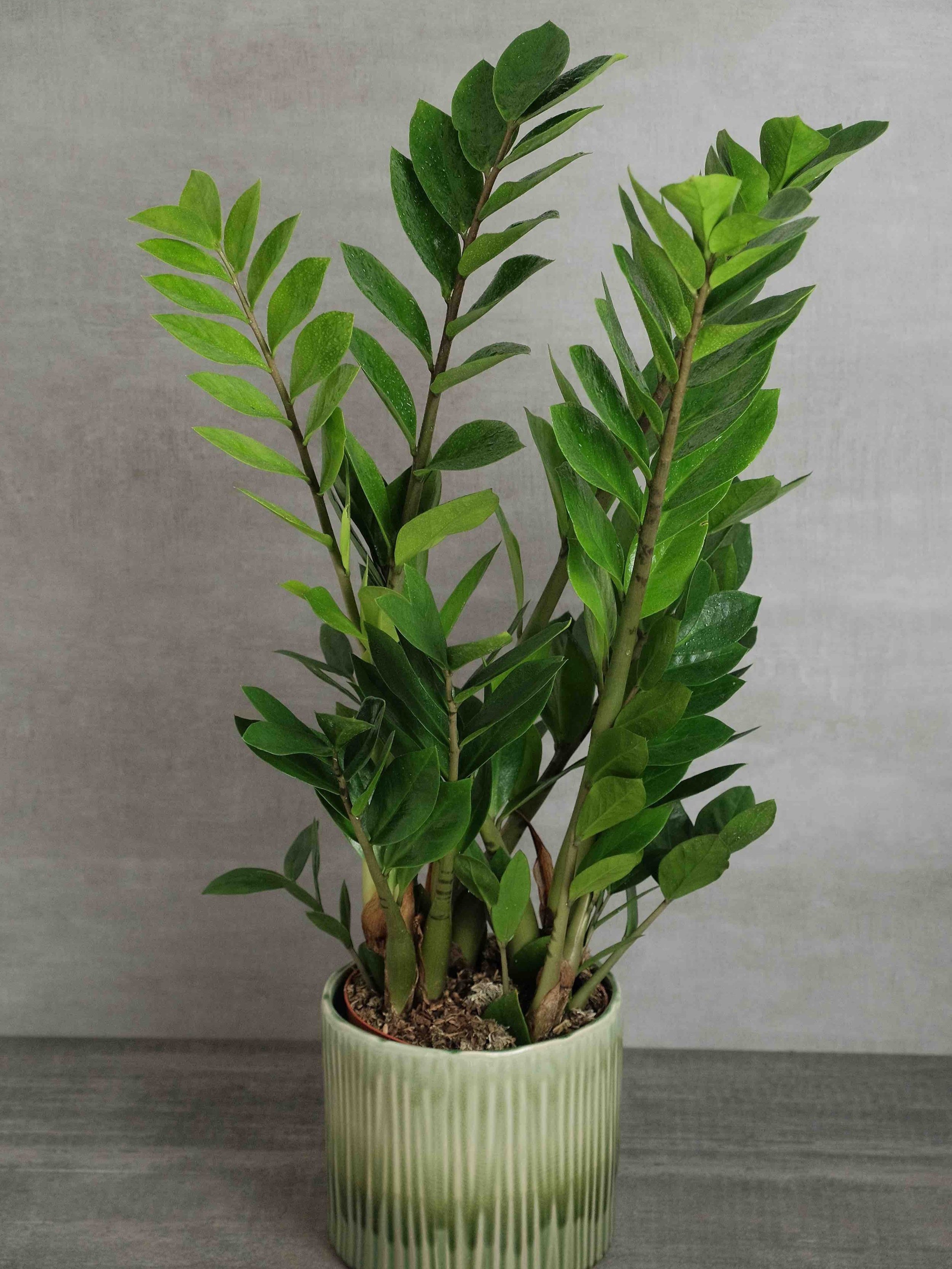Plant Profile
Fiddle Leaf Fig
a.k.a. Ficus Lyrata
One of the ‘it’ houseplants that just never goes out of style, the Fiddle Leaf Fig is originally from the rainforests of West Africa where it often flowers and grows fruit (hence its name). In the wild the Fiddle Leaf Fig can grow up to a whopping 50 foot tall and although it won’t grow as big when grown indoors (thankfully) it still makes quite the statement in any interior and brings a brilliant splash of jungle green to a room.
Top Tips
✔ Avoid moving this plant around too much - once it’s in the right spot would good light and consistent temperature, leave it there.
✔ Dust the leaves of the Fiddle Leaf Fig with a damp cloth regularly to improve their glossy appearance.
✔ Ficus Lyrata don’t need to be in soggy soil - keep soil aerated and allow a good amount of time to dry out in between watering.
Plant Care
-
The Fiddle Leaf Fig needs consistent bright, indirect light. Direct morning or afternoon light is fine, just avoid harsh midday direct sun.
-
The Fiddle Leaf Fig is better at handling drought conditions rather than an accidental over watering so be cautious when watering the plant. It is best to check the top soil regularly, if it is dry then the plant needs a drink. Although Fiddle Leaf Figs love to be watered thoroughly they do not like to sit in water; always allow the water to drain from the bottom of the pot. The Fiddle Leaf Fig also prefers to be watered with room temperature water as cold water can send it into shock.
-
Fiddle Leaf Figs thrive in high humidity environments, the plant also absorbs a lot of water through its leaves so misting regularly is essential.
-
The Fiddle Leaf Fig doesn’t require a lot of feeding, using a diluted liquid fertiliser once a month during the summer should suffice.
-
Lyrata’s need consistency in temperature, and will react to sudden temperature change. The plant especially does not like the cold so try to avoid temperatures below 16°C. Fiddle Leaf Figs don’t appreciate sudden changes in temperature; it is best to keep the plant away from drafts, radiators and air conditioning units.
-
This plant is toxic if consumed so keep away from children and pets.
-
To propagate a Fiddle Leaf Fig, cut a stem with 2-3 leaves, put this into distilled water immediately and position in a sunny spot. Make sure to replace the water whenever it looks dirty or cloudy. After around a month the cutting should have started to develop its own roots. Once these roots are a few inches long, plant the cutting using moist potting soil and continue to treat it as you would a normal plant.
-
When the Fiddle Leaf Fig is young it will need to be re-potted in the spring annually. However, once the plant is mature it may well be too big to be re-potted, instead we recommend replacing the first few inches of soil with fresh soil once a year.



Quick plant check up
Brown edges on leaves
This could be due to the humidity levels being too low or a lack of water. The problem is easily rectified by removing the browned leaves and increasing watering and misting of the plant.
Brown spots on leaves
This will probably be the result of over watering the plant. Check the soil, if it is very wet it is probably worth removing the plant and repotting it in fresh soil.
Dropping Leaves
If the plant starts to lose leaves it is probably not receiving enough light. Make sure to position the plant in a spot where it will receive bright, indirect light.




